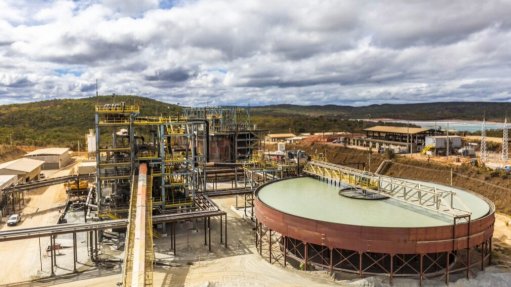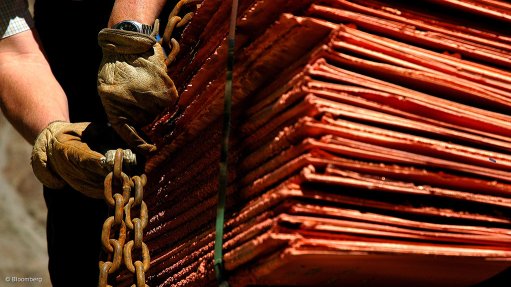SA’s aggressive decarbonisation strategy to start
South Africa is planning to source 41% of its total energy supply from renewable energy –including solar photovoltaic (PV), wind, hydropower and concentrating solar thermal power components – by 2030, which energy solutions provider Energy Partners Intelligence business development head Tygue Theron says is an aggressive decarbonisation strategy.
It is unlikely that coal power will be completely removed from South Africa’s energy mix, or at least not soon, he says, adding that while wind and solar power will become much larger contributors to national grid, for now, there needs to be a form of energy generation that canreliably be brought online the moment it is needed.
Since renewable-energy sources reach their peak production during different times of the day or year, more consistent baseload energy sources,such as coal, might be required to fill the gaps, he advances.
Solar energy cannot be solely relied upon to solve all energy issues, as it is generated only when the sun is shining.
“We will need to find innovative ways of providing energy during peak demand hours, either by storing solar generated energy or by complementing solar PV generation with other renewable-energy sources.”
Theron notes that “it is important to consider the economic and political impacts of the transition to green energy on our national workforce”.
In addition, the cost of energy in South Africa is still relatively cheap, making the incredibly capital-intensive option of upgrading and diversifying the country’s energy mix using more renewables a challenging transition from a financial perspective, he elaborates.
Consumers and businesses should expect to pay more for their electricity once the national grid has been upgraded, which will mitigate against load-shedding, which has reduced the country’s gross domestic profit by hundreds of billions of rands, he says.
Further, while a higher quality of service will also come at a higher cost, there is scope for businesses to offset their energy costs through private embedded generation.
Although this transition is estimated to bring an end to over 100 000 jobs in the coal mining industry, the potential job creation in the renewable-energy industry is estimated at 300 000.
“The solar PV industry in South Africa has more than doubled in size in the past five years, bringing a host of new companies into the market, which has increased market competition, subsequently driving prices down. This trend will continue until we have a fully mature solar PV market as seen in other countries that have made a similar transition.”
The future, from now to 2050, could bring all sorts of new opportunities and solutions, adds Theron.
For example, the transport sector is still highly carbon intensive – including the burning of petroleum and diesel fuel – but there has been a global shift towards electric vehicles (EVs), with most major car manufacturers announcing their commitment to decarbonisation.
It is believed that solar energy could be one of the most fitting solutions to power a national fleet of EVs in South Africa. Countries such as Zimbabwe and Chile have piloted EV-powered taxis, with solar PV charging stations at popular stopping points and taxi ranks, he says.
“Solar energy has played a pivotal role in the early phases of our energy transition, particularly in the Renewable Independent Power Producer Procurement Programme. South Africa has one of the most favourable solar energy yields globally and, therefore, should continue to take advantage of implementing this technology at a small and large scale,” Theron concludes.
Article Enquiry
Email Article
Save Article
Feedback
To advertise email advertising@creamermedia.co.za or click here
Announcements
What's On
Subscribe to improve your user experience...
Option 1 (equivalent of R125 a month):
Receive a weekly copy of Creamer Media's Engineering News & Mining Weekly magazine
(print copy for those in South Africa and e-magazine for those outside of South Africa)
Receive daily email newsletters
Access to full search results
Access archive of magazine back copies
Access to Projects in Progress
Access to ONE Research Report of your choice in PDF format
Option 2 (equivalent of R375 a month):
All benefits from Option 1
PLUS
Access to Creamer Media's Research Channel Africa for ALL Research Reports, in PDF format, on various industrial and mining sectors
including Electricity; Water; Energy Transition; Hydrogen; Roads, Rail and Ports; Coal; Gold; Platinum; Battery Metals; etc.
Already a subscriber?
Forgotten your password?
Receive weekly copy of Creamer Media's Engineering News & Mining Weekly magazine (print copy for those in South Africa and e-magazine for those outside of South Africa)
➕
Recieve daily email newsletters
➕
Access to full search results
➕
Access archive of magazine back copies
➕
Access to Projects in Progress
➕
Access to ONE Research Report of your choice in PDF format
RESEARCH CHANNEL AFRICA
R4500 (equivalent of R375 a month)
SUBSCRIBEAll benefits from Option 1
➕
Access to Creamer Media's Research Channel Africa for ALL Research Reports on various industrial and mining sectors, in PDF format, including on:
Electricity
➕
Water
➕
Energy Transition
➕
Hydrogen
➕
Roads, Rail and Ports
➕
Coal
➕
Gold
➕
Platinum
➕
Battery Metals
➕
etc.
Receive all benefits from Option 1 or Option 2 delivered to numerous people at your company
➕
Multiple User names and Passwords for simultaneous log-ins
➕
Intranet integration access to all in your organisation


















